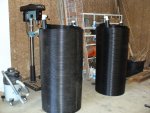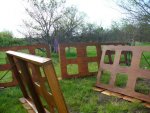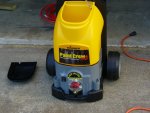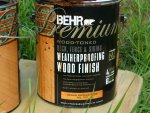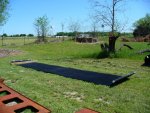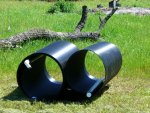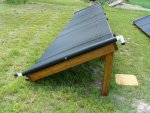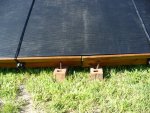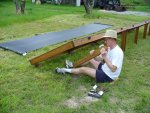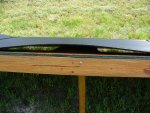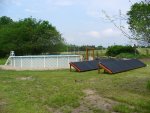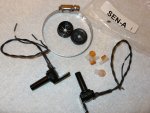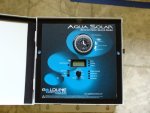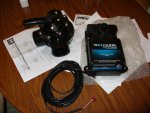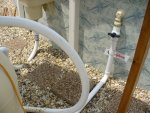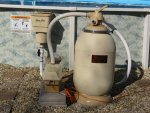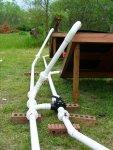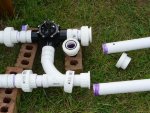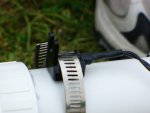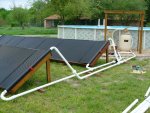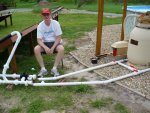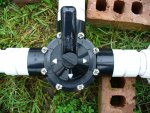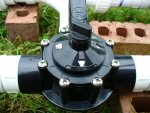After much debate and study, we finally chose Solar Bear AGP with 2" headers, made by FAFCO and purchased through Amerimerc.com. Parts are readily available, FAFCO is great to work with, and we already had experience with Amerimerc's super fast shipping to our area (1 day if they have it stock). And, when we had a break-down in communication on the parts, Amerimerc took it upon themselves to contact FAFCO and work out our parts issue- resulting in FAFCO fed-exing us free parts. We bought 2 panels 4ft by 20ft plus 2 mounting kits, a repair kit, and add-on kit (the part we did not need since we are plumbing in parallel, and the add-on kit is for a serial installation).
NOTE- Edit made 5/9/09... Amerimeric has gone up in price considerably on these parts since we bought them this winter. Two other web sites that have prices more in line with what we bought them for: http://www.bestbuypoolsupply.com/abovegroundsolar.htm
and http://www.aquasuperstore.com/products/ ... ~3664.html
We have not dealt with either of these, but if we add another panel, we will check into them...End Edit
We are putting the panels on the ground on racks slanted at roughly 30 degrees- when you see our ground you will understand why I say "roughly" We are at 33 degrees latitude and are trying to get additional heat at the front and back of the main swim season. This, for us, means swimming as early as mid-April some years and as late as early November. We are actually at only 28% surface area of our pool, but we had to start somewhere, and we had to choose to stop spending money somewhere, so that is where we are now. We can always add another panel or two down the line. We are not able to put our panels on a roof, because the pool is too far away from any available roofs.
First set of pictures: the panels, as they arrived. They have been sitting in the shop for a couple weeks, which gets quite warm on sunny days, in hopes that they would unroll a little. They did not.
NOTE- Edit made 5/9/09... Amerimeric has gone up in price considerably on these parts since we bought them this winter. Two other web sites that have prices more in line with what we bought them for: http://www.bestbuypoolsupply.com/abovegroundsolar.htm
and http://www.aquasuperstore.com/products/ ... ~3664.html
We have not dealt with either of these, but if we add another panel, we will check into them...End Edit
We are putting the panels on the ground on racks slanted at roughly 30 degrees- when you see our ground you will understand why I say "roughly" We are at 33 degrees latitude and are trying to get additional heat at the front and back of the main swim season. This, for us, means swimming as early as mid-April some years and as late as early November. We are actually at only 28% surface area of our pool, but we had to start somewhere, and we had to choose to stop spending money somewhere, so that is where we are now. We can always add another panel or two down the line. We are not able to put our panels on a roof, because the pool is too far away from any available roofs.
First set of pictures: the panels, as they arrived. They have been sitting in the shop for a couple weeks, which gets quite warm on sunny days, in hopes that they would unroll a little. They did not.


